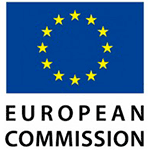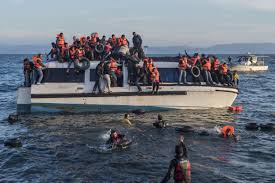Open Innovation and the Refugee Crisis
Published Jan-09-17Breakthrough:
The development of innovative projects to help refugees and migrants integrate in Europe, including a novel Virtual Reality program.
Company:
The European Commission, Belgium
The Story:
 In 2016, more than 220,000 people fled to Europe to escape conflict, disaster and unrest. During the previous year that figure was more than one million. This unprecedented flow of people, many of whom are vulnerable and need protection presents many challenges across the European continent. The majority of the refugees come from Syria, Afghanistan and Iraq, with many arriving by sea.
In 2016, more than 220,000 people fled to Europe to escape conflict, disaster and unrest. During the previous year that figure was more than one million. This unprecedented flow of people, many of whom are vulnerable and need protection presents many challenges across the European continent. The majority of the refugees come from Syria, Afghanistan and Iraq, with many arriving by sea. This refugee crisis has also created tensions within and between European countries as they try to cope with the numbers. Some places are facing a disproportionate burden. Among the other issues challenging Europe are protecting migrants and refugees, addressing their immediate and long-term needs and maximizing the benefits of migration while minimizing human and economic costs. This is fast becoming the largest and most complex migration surge since World War II.
Can Open Innovation Provide Solutions?
To help find solutions to some of these challenges, the European Commission turned to open innovation and launched the European Social Innovation Competition 2016. They were looking for ideas, services, products, platforms and models to support the reception and integration of refugees and migrants in Europe. This was the fourth annual social innovation competition, which is organized with the support of numerous partners, including the innovation foundation NESTA.
Ideas could relate to any aspect of the reception and integration process, including education and skills development, community cohesion and cultural diversity and access to appropriate housing and health services.
More than 1,000 ideas were submitted from innovators in 36 countries. Thirty of the most promising submissions were selected as semi-finalists and were invited to a mentoring academy in Germany to further develop their ideas. From this pool of creative minds, ten finalists were chosen to pitch their concepts. This resulted in the awarding of €50,000 (approximately $USD 52,000) each to three winners.
Winning Ideas
CUCULA: an educational program and manufacturing project from Germany created for and with refugees where they design, manufacture and sell furniture. The educational part includes tuition for technical qualifications, language classes and support to adjust to German daily life.
Project Virtuous Triangle: a platform from Turkey that matches local university students and primary school children with refugee pupils. Among the many aims of this project is the promotion of community cohesion.
The Machine to be Another from Spain is a Creative Commons Non-Commercial-Share-a-Like tool that provides a multi-sensory virtual reality experience for people to see themselves in the body of a refugee and experience some of the things they encounter. It's a novel use of technology to challenge stereotypes and break down barriers.
Solutions are Needed Now
The scale and urgency of the refugee crisis in Europe means that solutions are needed now. The consequences of not finding and implementing them would be very grave indeed and could include civil unrest, wasted talent and social exclusion. Open innovation is providing a quick way to access the smarts of innovators and put their ideas into action.
Next Story »

